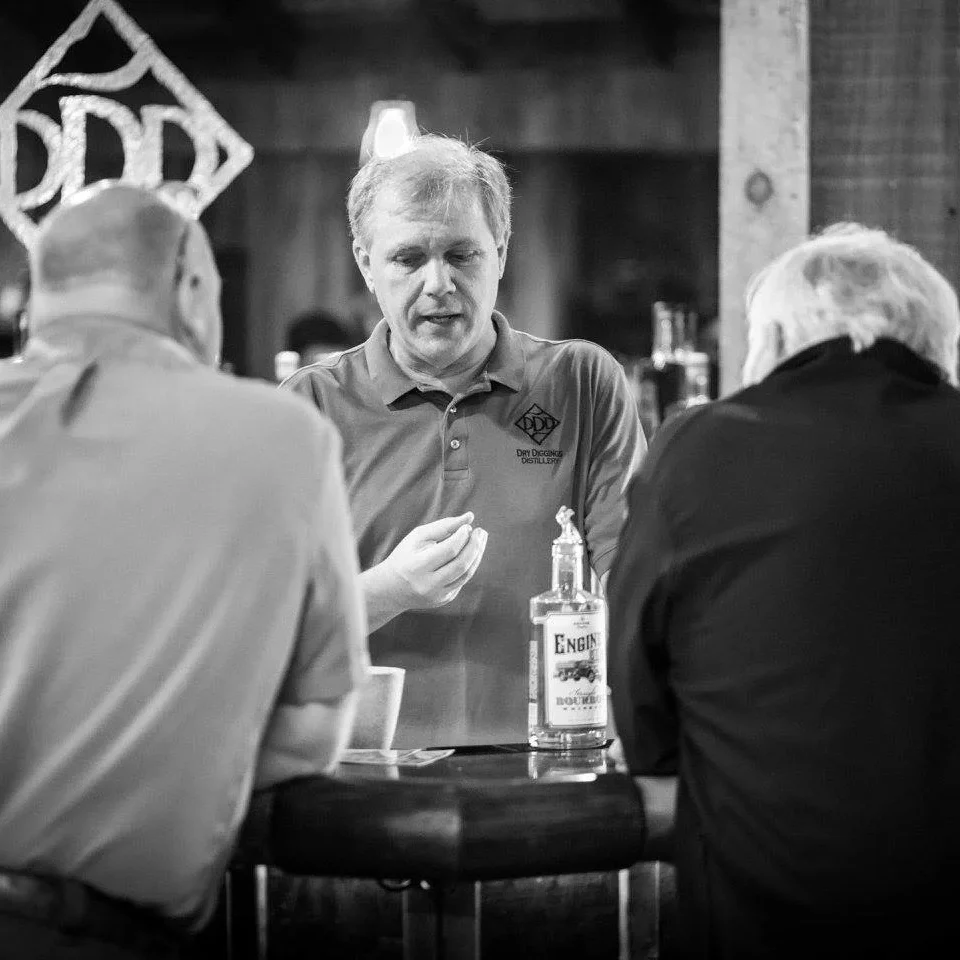Kingsbarns Distillery : Peter Holroyd, Distillery Manager

Kingsbarns Distillery with Peter Holroyd, Distillery Manager
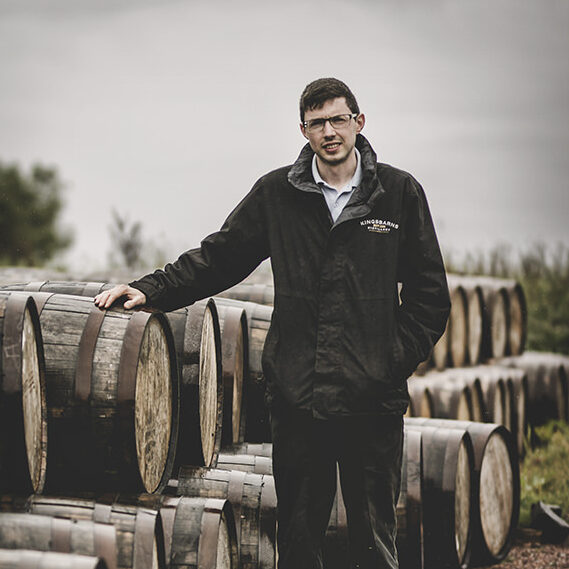
A Family With A Dream
The Scottish Wemyss family have had a longstanding passion for malt whisky and their connections with the industry date back to the turn of the 19th century when John Haig (founder of Haig’s built his first distillery on Wemyss land).
Can you tell us about the history and background of Kingsbarns Distillery, including when it was founded, and what sets it apart from other distilleries?
“Kingsbarns was established in 2014 but it wasn’t until March 2015 that we filled our first cask. We are an independently owned, Family run distillery. Owned and operated by the Wemyss family. What sets us apart? Well it’s a few different aspects in my opinion, but the liquid comes first and foremost. We have some unique production techniques including producing clear wort, using 2 separate strains of yeast in long fermentations and running the stills extremely slowly to ensure lots of copper contact. All of these things contribute to achieving an elegant and intensely fruity new make spirit.
Our Production Director, Isabella Wemyss then has the job of pairing the Kingsbarns spirit with the right cask type! We predominantly use first fill casks that are the perfect fit for our spirit from a few select suppliers. What is fantastic about the fact the family are so involved in directing the whisky style is that the right strategic decisions are made to get the best possible end product. We don’t have an accountant buying the wood and skimping on it. Money is spent where it matters, on great quality raw materials! We are also striving to anchor the dram to the place its made, so we only use locally grown barley and we mature all our whisky in Fife warehouses.”
What is the story behind the name and branding of your whisky, and how does it connect to your overall identity and vision of Kingsbarns Distillery?
“The distillery is named after the neighbouring village, Kingsbarns. The location was used in ancient times to store grain in the barns before being transported to the Falkland Palace so it’s a great wee link to its previous use. The building itself is a beautiful old farm steading and we have worked hard to ensure that the architectural features such as the Doocot have been conserved and celebrated. We always take pride in the area we reside. In fact all our releases are named after local landmarks or Fife themes.”
Can you share any interesting anecdotes or stories related to the history, production, or characters associated with your distillery or whisky brand?
“We certainly have a few characters working here! In all honesty we have a brilliant team of folk that are extremely passionate about the product and experience we provide. And there are so many stories of funny things that have occurred here. But you always learn from mistakes, that’s the important thing. I recall in the very early days of cask filling when we were still working out how to operate the cask filler we accidentally overfilled a cask when the spirit was being delivered to a barrel at full blast. We all ended up covered in new make spirit! Thankfully we only lost 2 or 3 litres of precious distillate, and it never happened again but at the time it was quite an experience.”
Why did you decide to partner with Glencairn Crystal as your preferred glassware supplier for whisky tastings, and what benefits have you seen from using The Glencairn glasses at your distillery?
“The Glencairn name is synonymous with quality. Using the correct glassware is incredibly important if you want to get the most out of a dram. Ideally a glass that funnels smell to the nose should be used. Its amazing how much more aroma you pick up when the whisky is presented this way compared to a standard tumbler glass in my opinion. But each to their own, you should drink your whisky however you like!”
There has been a lot of buzz around sustainable and eco-friendly practices in the spirits industry. Has your distillery incorporated these practices, or is there a long-term plan you are working towards?
“Sustainable practices are such an important issue these days and its crucial that we do all we can to strive for continuous improvement in that regard. we minimise our carbon footprint by using local barely within 6 miles of the distillery and draw water from beneath the distillery itself. We also recycle our draff and send it off to a local farmer to be used as cattle feed. Waste water is processed before going to a reed-bed and pond onsite which is great for biodiversity. We have recently started keeping bees too at hives behind the empty cask storage area, important pollinators for plants of course! Going forward, we have plans to put in a 100Kw solar scheme at the distillery which should provide about 60% of power requirements for the site.”
What trends do you see affecting the whisky industry at the moment, and how is your distillery positioned to take advantage of them?
“It’s a very interesting time to be in the industry. We are seeing a boom right now alongside a new generation of whisky drinkers, its recognised as a drink for everyone nowadays and its fantastic to see so many people excited about it! There is a trend towards premiumisation, but I think that in order to reach a wide audience its important to make your malt accessible price-wise. This helps build a brand which is crucial for a relatively fresh-faced distillery like Kingsbarns. That’s certainly a balance to strike. We also feel that a sense of place is important in differentiating us from other brands so we keep things as local as possible from locally grown barley to the spent grain that feeds the cattle the next field along.
Over the last few years I’ve noticed some trends in the industry of using all sorts of weird and wonderful casks, which is great, but to be honest at Kingsbarns we really focus on making a classically “Lowland” style of malt, so we want a light wood touch in terms of maturation. You get the most fantastic sweet and fruity note on the new make spirit so we don’t want too much of that to be lost through dominant cask influence.”
What do you see as being the future of whisky in the short term, and how do you plan to respond to it?
“I think nowadays there is an increased emphasis on flavour. Folk probably drink slightly less but drink better and are willing to try younger malts too which is fantastic. The adage of “older is better” doesn’t apply quite as much as it did in the past. Moreover if you are a small producer of malt whisky like ourselves, you need to focus on quality of product first and foremost. At the end of the day what is important is smell, taste and the experience of the drinker. We are never going to be able to compete in price with some of the big brands so for us, we have concentrated on doing our level best to make an interesting and characterful malt. Get the dram under folks noses and if its decent whisky, you can let the liquid do the talking!”
Throughout your experience in the spirits industry, what has been the most unexpected and significant surprise you have encountered?
“Following on from what I mentioned earlier, I’m completely astonished by the rate of growth the industry has seen over the last 10 years. In 2022 the export value surpassed 6 Billion pounds. It’s extremely positive for the country in job creation and investment. We are now seeing large, established brands expanding alongside many new, smaller distilleries opening their doors for the first time. Blended whisky still commands greatest global sales, but the malt category where there is rapid growth. Its going to be interesting to see how this develops over the next few years.”
Finally, can you discuss any exciting projects or releases that you have planned for the near future?
“We wouldn’t want to give anything away especially before we have publicly announced anything, but we do have a few very exciting releases due the end of this year and as always you can expect some exceedingly high quality single cask expressions coming from Kingsbarns in the near future too.”
To find out more about Kingsbarn Distillery and their range of whisky please visit here.
Dry Diggings Distillery: Cris Steller
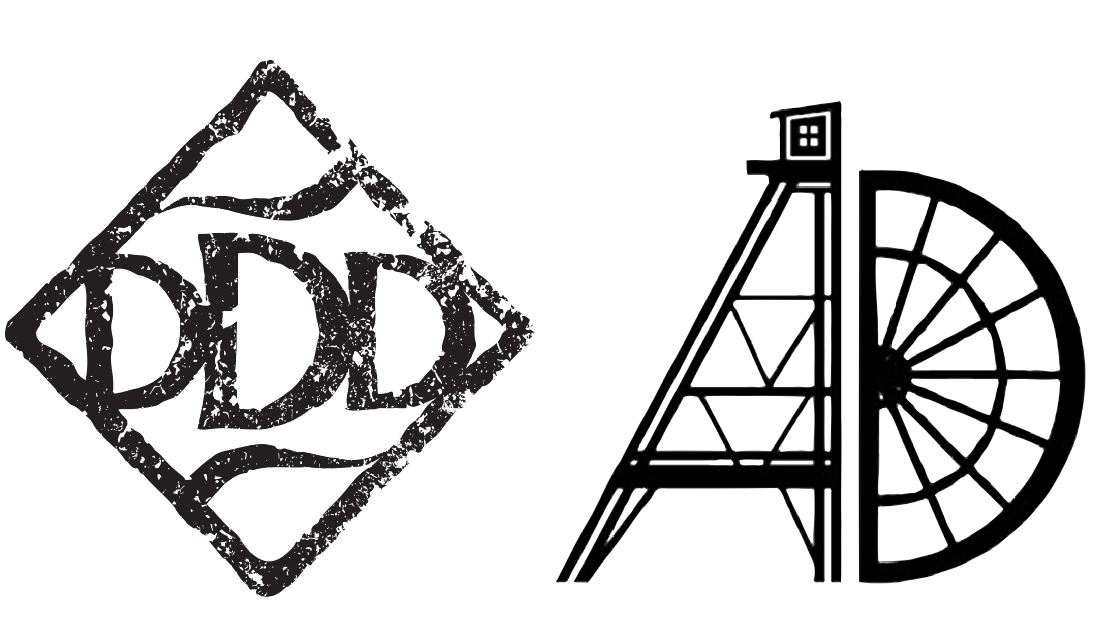
Dry Diggings Distillery: Cris Steller

“The name Dry Diggings Distillery comes from the original name of the town from 1848 when gold was being mined before the big gold rush a year later (49ers).”
Can you give us a bit of background about yourself and how you started in the whiskey industry?
I worked with non-profits and industry trade associations. One of my clients was the retail liquor dealers association, so I got to see the off-premise from the supplier’s side of things. I moved to Mexico and was exposed to the tequila & mescal business down there for about 10 years. That did not prepare me for this.
I talked with a buddy who also had a friend and we all started bouncing ideas off each other. We heard about St. George Distillery and ADI, and that really got us thinking. We came up with 5 business plans, with the distillery being the least likely, to be approved, but it turned out that the County encouraged the distillery and binned the 4 others. So we started up planning in 2008 with construction finished in 2012.
Can you tell us about your distillery, and what makes it unique?
That we embrace grain-to-glass on one brand, but on the other we will blend with sourced spirits as well.
We do a little bit of everything since most distilleries do one or the other.
The name Dry Diggings Distillery comes from the original name of the town from 1848 when gold was being mined before the big gold rush a year later (49ers). The town’s name was later changed to Hangtown, and then finally renamed Placerville.
Are there any little ‘distilling’ secrets you can let us in on?
Weather is the secret to what we do. The temperature changes daily by at least 30 degrees year-round, so when people taste our barrel aged spirits they pick that up in the spirit. Our clear spirits represent good clean fermentation and slow precise distillation.
Whiskey has been phenomenally successful in the United States and around the planet, why do you think this is compared to other spirits?
I would have to say it is tradition, the history of whiskey and a bottle that gets passed down from generation to generation. It is something that is acquired with age. People grow older and think to themselves, “Maybe Dad had better taste, and now I understand.
In your years in the industry, what have been the biggest surprises you have faced?
The complete lack of support from U.S. distributors. They treat small brands with little understanding or interest.
Didn’t see that coming.
What are the big trends that are affecting the whiskey industry at the moment?
Terroir. Single malt doesn’t have to taste the same everywhere. Use of different grain and how the whiskey is aged.
I also hope that blending will become more popular, like Scotland. It really is a unique skill set that is still not fully appreciated in the U.S.A.
Are there any interesting stories from your time in the whiskey industry that you could share?
Probably when Gov. Brown famously came back from the climate summit in Paris, and I got a call from a member of the Democratic party. They wanted to create a basket for the governor to present to him on his return. It turned out he was a big fan of our vodka & whiskey.
He sent us a note thanking us for it as well as a call. He was moving into the new Governor’s house upon return to California. They were planning to sleep that first night back in the house and celebrate with a cocktail. He loved seeing our California spirits sitting in the front entry way of the house.
What developments in the whiskey industry most excite you?
The public’s willingness to try something new.
They haven’t completely abandoned the tried & true old-time brands, but are opening up to embracing something new.
What do you see as being the future of whiskey in the short term?
Expansion of the American single malt and rye whiskey categories. Both really excite me!
Why do you use the Glencairn Glass in your business and what makes it so special?
I like that it ties itself back to the birthplace of whisky. It carries on the history & heritage of whisky. It is what we use to sample everyone at the distillery.
They are not cheap, and make a perfect pitch sound that you don’t get with other glassware. Also, the fact that Glencairn brands them for us, thus making it a partnership. We always remind folks that these come from Scotland and we love that about them!
Visit the Dry Diggings website here
Sonoma Distillery: Adam Spiegel

Sonoma Distillery: Adam Spiegel
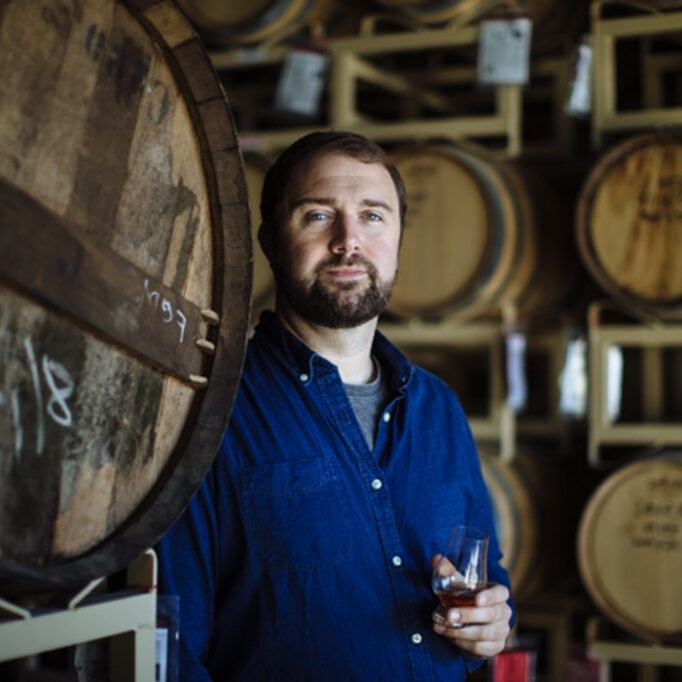
“While working with great Master Distillers and Blenders over the years, I’ve honed my skills to continually raise the bar with each new product and batch. There are no ‘Masters’ here per se; we’re just talented people striving every day to better ourselves and our craft. I like to say that we’re making whiskeys in a small way, for a big world.”
Can you give us a bit of background about yourself and how you started in the whiskey industry?
Sure, so my story is somewhat similar to many other distillers. I was working in the finance field in 2008, and then when the crash came, I found myself looking for an industry that was a bit more recession proof.
I had started brewing beers, which lead to making wine, which lead to grappa, which lead to whiskey, all of which was as a hobby. By 2009-10, I was working with my old business partner, and we thought the whiskey we were producing was good enough to make professionally. I started going to ADI events, taking distilling courses that they offered and learning more about the business itself.
We started working with a liquor lawyer in California about starting our own distillery, and next thing you know, we were one of the first 200 distilleries in the U.S. by February 2010. The first 3 years were really more or less a R&D process for me, and then I parted ways with my business partner. It was then that I went to study with Hubert Germain-Robin. He still comes in to advise on the spirits. I have also been lucky enough to work with industry nose Nancy Frayley, who has always been a great contributor to my business.
We started with 784 sqf and have grown it now to over 21,000 sqf! We moved next door to a bigger facility & have recently built a new barrel room.
Can you tell us about your distillery, and what makes it unique?
A couple things make us unique – we are in Northern California; we are in the heart of wine country and we only make whiskey.
The type of equipment we use is the Scottish pot stills from Forsyths and the alembic cognac stills give our whiskey a very different flavor from others.
Are there any little ‘distilling’ secrets you can let us in on?
Not to be a pretentious A-Hole, and to accept critiques & praise & education equally whenever possible.
Whiskey has been phenomenally successful in the United States and around the planet, why do you think this is compared to other spirits?
Whiskey for a long time has been straddled with the tag of “what your father or grandfather used to drink”.
But now, due to shows like like “Boardwalk Empire” & “Madmen” plus the rise of the new cocktail culture has made whiskey a cool thing again.
In your years in the industry, what have been the biggest surprises you have faced?
That the quality of the juice has little to no effect to the viability of the product in the marketplace. So much goes into marketing a brand that you have to do so much more – marketing, messaging, etc.
There are people who just got it. There are people I speak to that I really respect in the industry who are, when they speak, do so in a coded language, that I still don’t quite understand it. To some, this part just comes naturally.
What are the big trends that are affecting the whiskey industry at the moment?
From the supply side – age statements & price point availability are some of the trends that I see may pay dividends in the future.
Are there any interesting stories from your time in the whiskey industry that you could share?
Sure, I tell the story a bit more now than I used to. There is a gentleman named Mr. Robin Robinson who handed me the biggest slice of humble pie that I ever had. We were in Chicago at the Indie Spirits Expo when I told him that I didn’t like blended Scotches. He asked, “Why?”, and I said that they weren’t all that.
He then proceeded to take a number of single malts, taste me out on each one, and explained just how difficult it is to bring those flavors together and make them gel together. It really opened my mind and from then on, I kept an open mind. It was an area where I thought I knew it all, but I learned I was wrong.
What developments in the whiskey industry most excite you?
I think a lot of it has to do with barrel finishing. That I think is exciting! I also like the idea of bringing back bottled-in-Bond as well. Also, sourcing ingredients locally, since I realize the positive economic impact it can have on the local farmers. I think that is really important! It is why we are a 100% California sourced spirit!
What do you see as being the future of whiskey in the short term?
I see new household brands emerging, that taste unique & different.
Why do you use the Glencairn Glass in your business and what makes it so special?
So, this is not bullshit at all – the glass itself is built really, really well! This from a guy who breaks a lot of glasses! I like the nose on it, as someone who blends whisky. I can really move the Glencairn glass as I swirl it. The knuckle of my thumb fits perfectly on the base of the glass, so it is a perfect fit.
My only qualm is if the base was only a little taller so that my hands were further from my nose when nosing a spirit. That way any aroma of my hand wouldn’t interfere with the aroma of the spirit.
Visit the Sonoma website here
Balcones Distillery: Jared Himstedt

Balcones Distillery: Jared Himstedt
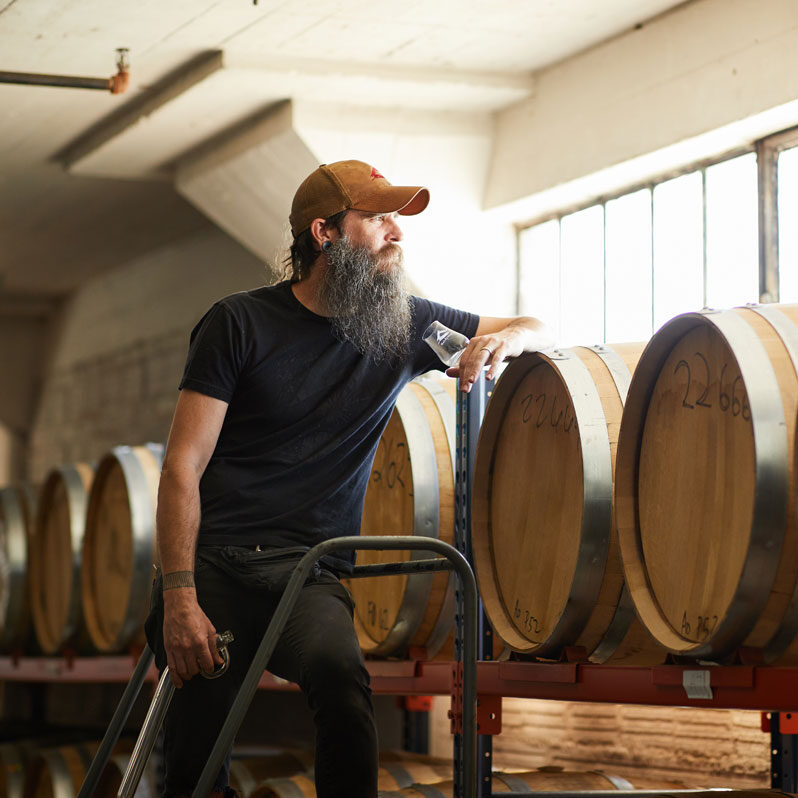
From Grain to Glass...
“Everyone in this industry needs to remember that we are doing way more than whisky, and other people are incorporating what we make into some of the most important moments of their lives.”
Can you give us a bit of background about yourself and how you started in the whiskey industry?
I was homebrewing beer for about 10 years before becoming interested in whiskey. Home brewing is very DIY, and we applied the same approach to distilling, so we were always asking what do we do next, but the next thing you know we had a distillery!
I previously did studio ceramics and was in social work and even opened a bar for a while, planning on brewing beer there (at the bar), but realized we didn’t really have the space to pull it off. We read as much as we could to learn about distilling, we talked to as many others within the industry as we could as far as learning distilling.
We kind of pride ourselves on the fact that we learned as we went. I think people that are paying attention, and diligent with their experimentation can learn a lot with direct experience.
Can you tell us about your distillery, and what makes it unique?
The use of Scottish (Forsyths) pot stills, even for our American Whiskey styles, was pretty unique when we started. Also, again, something probably more common now that wasn’t when we started was that we made single malts in the U.S.
When we started there was no Texas whiskey being made, so maturing in this area was a huge question mark. It’s a very different maturation climate than the traditional whiskey regions of the world. But now with whisky from Taiwan and India, with similar climate to ours, the conversation about whiskey from more extreme climates is more fleshed out.
Whiskey has been phenomenally successful in the United States and around the planet, why do you think this is compared to other spirits?
I am no booze historian, yet the easy answer is whisky is delicious. I can’t understand why it wasn’t as big in past decades with people.
But more seriously, Whiskey has somehow been able to be both mysterious and yet pedestrian. You can throw some Bourbon or Scotch on the rocks, or with Coke, or you can purchase some exotic bottle that you only drink neat. It just has such a broad appeal.
In your years in the industry, what have been the biggest surprises you have faced?
Some of the biggest things I didn’t see coming, were how many distilleries have popped up since we started.
Also, how the bigger the industry got; the more difficult things became. You start making the whiskey and seeing the business grow, which means hiring people who know marketing and get feet out on the street to get your brand on store shelves and backbars.
What are the big trends that are affecting the whiskey industry at the moment?
The ones I am most involved with these days, and most aware of, are the proliferation of single malts globally. American Single Malt is really having a powerful moment and gaining both recognition and momentum.
Closer to home is the birth & growth of Texas whiskey. It is truly exciting that in my lifetime I am getting the chance to participate in the beginnings of two brand new and flourishing whisky styles.
Are there any interesting stories from your time in the whiskey industry that you could share?
I was pouring whiskey at an event for an American gent who had married a Scottish girl, and whose Scottish father-in-law was residing in Texas, but was very ill in hospital. The father had heard of a single malt whiskey being made in Texas, so he sent his son-in-law out to find this Balcones single malt and bring it back to him. He found it, brought it back to his father-in-law in the hospital, and they would share little nips in the evenings every night.
Since the father-in-law was Scottish, he was deemed the whiskey expert of the two men, and he really liked it. When the older man passed away, they found that the bottle still had some whiskey left in it, so the family would share it in memory of him from time to time.
It shows that we are making more than just whiskey, but are affecting moments in people’s lives. I think everyone in this industry needs to remember that we are doing way more than whiskey, and other people are incorporating what we make into some of the most important moments of their lives. We get to be the stewards of something that is very meaningful to people.
What developments in the whiskey industry most excite you?
I don’t like getting hoarse from all the talking that I do, but I do enjoy the whiskey events around the world and trying all the other whiskey to see what others have been doing. We get very excited about this since we get to try all that whiskey, all in one place, all at one time. It is also interesting to see what folks are doing with new strains of grain as well.
What do you see as being the future of whiskey in the short term?
Well, obviously, the Covid-19 stuff is throwing everyone’s expectations out the window. I do see continued growth, but with some hiccups because of recent events. There should still be growth, though perhaps slowed down more than we thought.
There will also be a big loss among distilleries, especially with those that never had a good stronghold in the marketplace to begin with.
Why do you use the Glencairn Glass in your business and what makes it so special?
So, this is not bullshit at all – the glass itself is built really, really well! This from a guy who breaks a lot of glasses! I like the nose on it, as someone who blends whisky. I can really move the Glencairn glass as I swirl it. The knuckle of my thumb fits perfectly on the base of the glass, so it is a perfect fit.
My only qualm is if the base was only a little taller so that my hands were further from my nose when nosing a spirit. That way any aroma of my hand wouldn’t interfere with the aroma of the spirit.
Visit the Sonoma website here
Why do you use the Glencairn Glass in your business and what makes it so special?
So, this is not bullshit at all – the glass itself is built really, really well! This from a guy who breaks a lot of glasses! I like the nose on it, as someone who blends whisky. I can really move the Glencairn glass as I swirl it. The knuckle of my thumb fits perfectly on the base of the glass, so it is a perfect fit.
My only qualm is if the base was only a little taller so that my hands were further from my nose when nosing a spirit. That way any aroma of my hand wouldn’t interfere with the aroma of the spirit.
Visit the Balcones website here
Limestone Branch Distillery: Stephen Beam
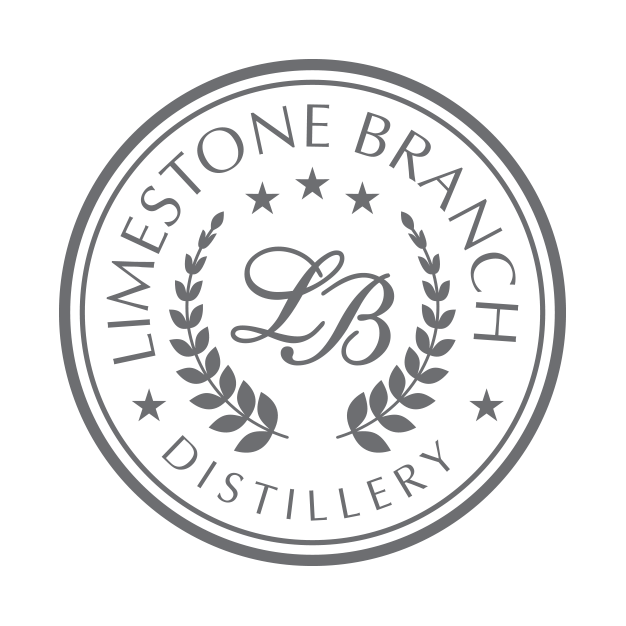
Limestone Branch Distillery with Stephen Beam, Master Distiller
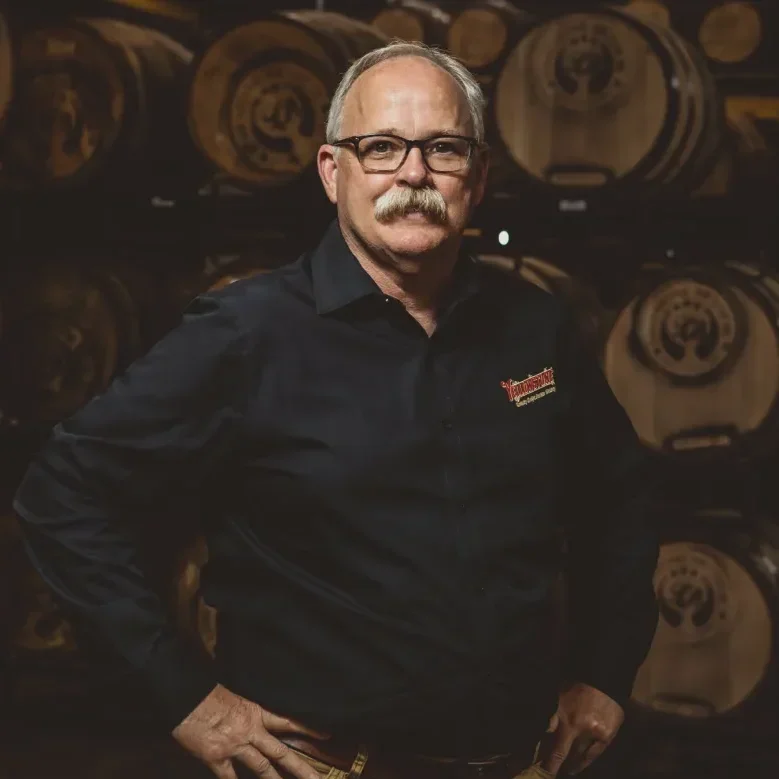
"Our spirit is strong. Our Heritage is real"
“I had already been in the restaurant business with my brother Paul for 10 years, then we decided to open our own distillery. We started the whole process in 2009, in 2010 we incorporated & by 2011 we opened the doors.”
Can you give us a bit of background about yourself and how you started in the whiskey industry?
I like to say that I grew up around the industry as opposed to in the industry. My father got out of the business back in the 40s. He was actually a baseball player, in the Bourbon League, back when each distillery had a team. and he & his brother’s main job was playing on the distillery team, but you had to work for the distillery, so they got the job just to get on that team.
My aunts & uncles & cousins were all in the business. And even my mom peaked my interest when at an early age she would take my brother Paul & me to the Dant Distillery since she was proud of her family heritage. When I graduated from school the whiskey industry was heading down so I pursued a degree in landscape architecture for the first 20 years of my career. But I always kept coming back to distilling, though regulations were still not friendly for starting up a distillery of my own.
Then the internet came around and I did more research, and discovered Dry Fly Distillery in Washington State and Fritz Maytag with Anchor Distilling in San Francisco. These were more on the scale that was available to me. I also went to an ADI Conference in Louisville where Bill Owens really helped me out a lot, and I was just bitten by the bug. I had already been in the restaurant business with my brother Paul for 10 years, then we decided to open our own distillery. We started the whole process in 2009, in 2010 we incorporated & by 2011 we opened the doors.
Can you tell us about your distillery, and what makes it unique?
We started out as a small artisan distillery, and we are still a very tactile one, doing everything by taste & smell. We were using heirloom corn before most other distilleries, and were putting out just a few barrels a month and are now up to about 40 barrels a month.
Once we teamed with LUXCO in 2015, this allowed us to focus more on just producing Bourbon instead of things such as Moonshine to pay the bills. We are also ready to expand and increase our production in 2021.
Are there any little ‘distilling’ secrets you can let us in on?
We use pot stills, instead of column stills which many other Bourbon producers prefer, and are using an old fashion worm-tub instead of condensers. It is my belief that pot stills provide a richer quality spirit before they even hit the barrels.
I, personally, believe that Fall & Winter productions produce a better whiskey here in Kentucky. Low humidity, cooler temperatures- the yeast loves it! Happy yeast makes great whiskey! We also use a proprietary yeast which we were able to revive from residue from our grandfather’s dona jug (an old copper jug to store distilling yeast) some 50 years after the last time he used it!
Whiskey has been phenomenally successful in the United States and around the planet, why do you think this is compared to other spirits?
I think, particularly whiskey, that people started embracing the food culture and started appreciating the handcrafted whiskeys out there. There’s such a devotion to the craft and the history and the heritage.
In your years in the industry, what have been the biggest surprises you have faced?
For me, it was the explosion for the demand of Bourbon. We didn’t get into the business because of that…it just happened around us.
What are the big trends that are affecting the whiskey industry at the moment?
The expansion of demographics – women, young people, minorities, etc. It’s great! It used to be an old man’s drink, something your father or grandfather would drink but now everyone is getting into it.
Are there any interesting stories from your time in the whiskey industry that you could share?
Several of the large distilleries in Kentucky in the 1970s went into the fish industry. Business was in the doldrums and the big producers were looking for another revenue stream (so to speak).
It just seems like everyone from that era has a story about that time, and how all the fish died. It was just the biggest cluster you could imagine! Though I was at a dinner for the KDA when the subject came up, but then a wife of one of the participants turned to tell us, “We don’t talk about the fish!”
What developments in the whiskey industry most excite you?
The development of all the small distilleries having aged whiskeys. There is such a large breadth of profiles & tastes. It’s just amazing! I think it is very exciting!
What do you see as being the future of whiskey in the short term?
Barrel picks from different liquor stores & bars, which give you a curated variety to choose from.
Why do you use the Glencairn Glass in your business and what makes it so special?
It’s obviously a great glass for whiskey, because it channels the aroma up to the nose and the clarity of the glass lets you see the quality of the whiskey. We use the Wee Glencairn Glasses on our tours!
Visit limestone Branch distillery website here
Garrison Brothers

Garrison Brothers with Charlie Garrison
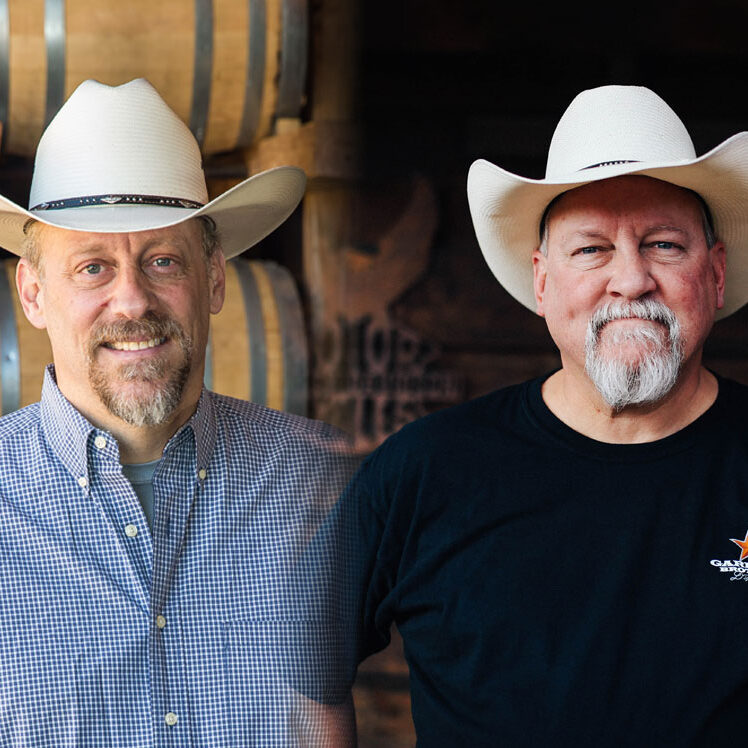
A commitment to quality and authenticity
“I was in awe watching what my brother did to get this business started. He was one of the early pioneers of the craft spirits boom. Everyone told him that you couldn’t make bourbon in Texas.”
Can you give us a bit of background about yourself and how you started in the whiskey industry?
I’ve been in a bunch of different industries. I made a lot of money in some and lost a bunch in others. I was in awe watching what my brother did to get this business started. He was one of the early pioneers of the craft spirits boom. Everyone told him that you couldn’t make bourbon in Texas. It was a terrible idea and I wanted in. I came on board as soon as he had enough bourbon to start selling it.
Can you tell us about your distillery, and what makes it unique?
On top of being the first legal whiskey ever made in Texas and the first of the regional bourbon makers, we only make bourbon whiskey. We see beauty in the process as much or more than the end product. The product is simply a validation of the process and place.
Are there any little ‘distilling’ secrets you can let us in on?
If you are trying to make cheap whiskey, I wouldn’t try it in Texas
Whiskey has been phenomenally successful in the United States and around the planet, why do you think this is compared to other spirits?
I think there are two main reasons – the first is wood. It’s the common denominator. There is something special that wood imposes into whiskey – it does the same thing with BBQ and smoked foods. It’s not just a “good” flavor, It’s complicated and it makes you think.
The second is time. Making whiskey is special because it takes time. Investing years making whiskey gives it a sense of pride and purpose. It creates its own tradition. To be honest I think that is why so many of us get emotional about the makers vs the fakers argument. The fakers just don’t see the beauty in the process.
In your years in the industry, what have been the biggest surprises you have faced?
The first surprise was and still is the biggest. The spirits industry is not a free market. I fought “the system” tooth and nail for years. It kept me up at night. Spirits makers don’t get to control their distribution. That is handled by another “tier”. The interaction with the customer is handled by yet another tier. All of these tiers are legislated. If you want to succeed in this business you have to learn to work within a system that has been carefully and legally crafted over years to benefit the existing players.
What are the big trends that are affecting the whiskey industry at the moment?
I don’t see whiskey’s growth as a trend. I think its part of the societal changes that have come about due to the internet and social media. As I mentioned, whiskey is a product that makes you think about it. It makes you want to understand it. Social media gave whiskey drinkers a chance to start asking questions and learning. The more they posted the more people became interested. In all the years I have been in this I have never come across a podcast devoted to unflavoured vodka. I’ve come across hundreds about whiskey.
Are there any interesting stories from your time in the whiskey industry that you could share?
We try not to take ourselves too seriously but we do take our work seriously. So, most of our stories are about the dumb things we have done. One that jumps to mind is my brother’s decision a while back to go outside late one night to use the head. That’s standard operating procedure in rural Texas. Apparently, game cameras are also standard operating procedure these days and Dan chose the wrong spot. So, I imagine if you want to see my ugly brother’s giblets, they are probably out there on the internet for the world to see.
What developments in the whiskey industry most excite you?
That one is easy. There are whole lot of bees at the picnic table now. It’s pretty easy to chase off a single bee but chasing off hundreds of bees is damned near impossible. We bees are starting to work together to change this industry. I think it’s just a matter of time before the end consumer will get to decide when, where and how they buy their spirits. The free market will win the day.
What do you see as being the future of whiskey in the short term?
Over the past 10 years there were a lot of good business people that saw an industry with great growth potential and jumped on board. That’s a good thing. It has given whiskey a bigger platform and more attention. But I think that many of those folks don’t have a story to tell or a love of the process. They are making widgets as fast as they can and are trying to make the best widgets possible at the best price possible. But the competition keeps getting tougher. In order to get their share of the pie they are having to do unique things to get attention like adding flavouring to their whiskey. I don’t think whiskey drinkers will play that game for very long. Peanut butter whiskey may introduce new people to whiskey but most of those people will go on to beef flavoured rum when that comes out. I think the folks that will be left standing are the ones that are in it because of the beauty of the process. Don’t get me wrong, I don’t have anything against flavoured whiskey but that flavouring needs to be as thoughtful and honest as the whiskey itself.
Why do you use the Glencairn Glass in your business and what makes it so special?
Elegance. Plain and simple. Glencairn was there long before peanut flavoured whiskey and it will be there long after beef flavoured rum. There is something calming and thought provoking about looking into a Glencairn glass filled with a damn good whiskey.
Ironroot Distillery: Jonathan & Robert Likarish

Ironroot Distillery: Jonathan & Robert Likarish
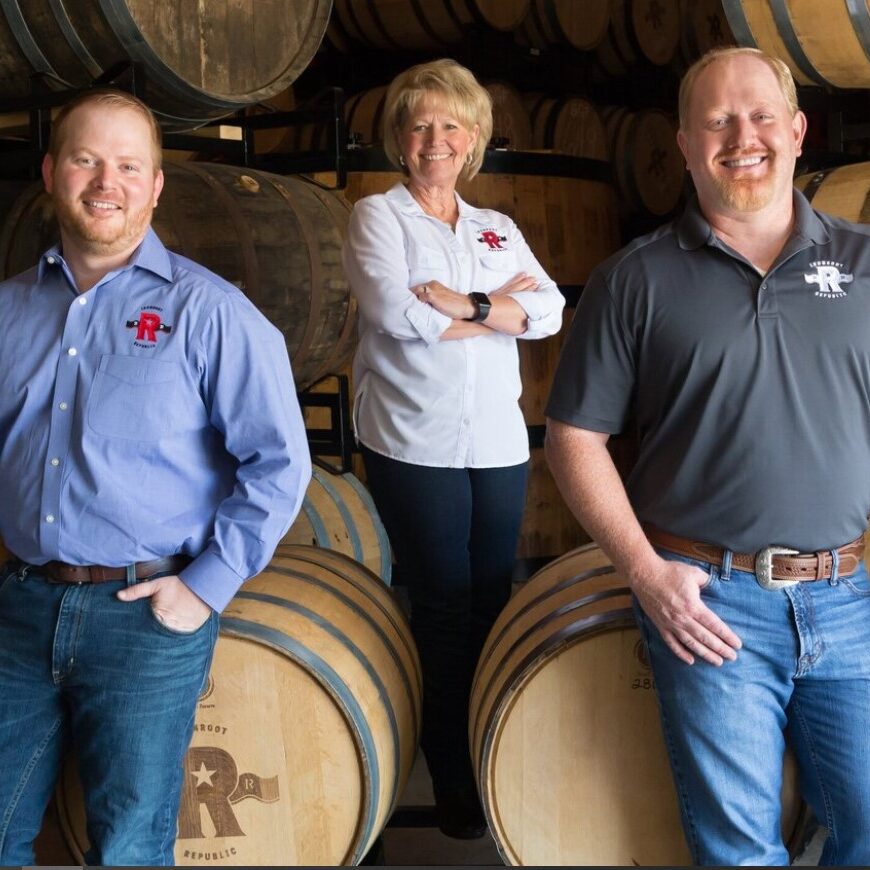
“I was a law student, but I decided to serve a different type of bar. Friends thought we were crazy since there was still a recession in 2012.”
Can you give us a bit of background about yourself and how you started in the whiskey industry?
Jonathan & I (Robert) started our whiskey journey about a decade ago (2010). We visited the Dry Fly Distillery in Spokane, Washington, the first craft distillery we visited, and we fell in love at the sight of those copper stills. I (Robert) was a law student, but I decided to serve a different type of bar.
Friends thought we were crazy since there was still a recession in 2012. Jonathan was an engineer at a surgical power tool company. We began to realize that the two of us weren’t enough, or even four, so we recruited our mother Marcia as well. We went back to Dry Fly and did some training there, but also learned from consultants such as Nancy Fraley.
Can you tell us about your distillery, and what makes it unique?
A couple of things. The use of heirloom varietal grains. Marcia just planted some atomic organic corn for us to use. We have used bloody butcher corn, purple corn, flint corn… You name it. What we are most known for is the use of French techniques in our whiskey distilling and maturation.
We are very involved in the individual barrels thus being able to control the extraction & maturation. The French method was a natural progression since Denison, TX is a sister city to Cognac in France. This is where they retrieved the vines to replenish the vineyards in the late 1800s after the blight hit the Cognac region.
Are there any little ‘distilling’ secrets you can let us in on?
One thing we like is emphasis in slow reduction to your final whiskey. Especially with the aggressive weather we have down here in Texas. We like to give the water & whiskey extra time to interact with the barrel during maturation.
Whiskey has been phenomenally successful in the United States and around the planet, why do you think this is compared to other spirits?
There is a romanticism to whiskey due to the artistry & length of labor that goes into making the spirit. There is also a link to past generations. There is also a new interest in flavour, not only spirits, but also food, with such things as the Food Network. You can have a wider variety in the whiskey category with everything from lighter nuances to bigger heavier flavours.
In your years in the industry, what have been the biggest surprises you have faced?
How the regionality has started to rise in the U.S. There was once just Kentucky and everywhere else. Now you are starting to see traditional Midwest spirits, and also the Empire Rye in NY State or the Maryland Rye, or even Texas whiskey.
Also, winning the World Whisky Awards has been a huge boom to us. Even during this pandemic, we are busier than ever!
What are the big trends that are affecting the whiskey industry at the moment?
The trend over the last few years has been experimentation and innovation.
You are starting to see single barrels, higher proofs and the use of different barrel types.
Are there any interesting stories from your time in the whiskey industry that you could share?
There was the time that Berry Bros. & Rudd in the UK gave us a call to do a collaboration. Their initial email ended up in our junk mail, but once we found it was legit. That was a huge surprise. Unfortunately, after only two batches the rise in tariffs pushed the whole program overboard.
What developments in the whiskey industry most excite you?
We have single malt that has been aging for 3 years now, so the American single malt movement has been exciting. We have begun playing with a number of malts in anticipation of this coming about.
We are also interested in the potential for rum to come into its own.
What do you see as being the future of whiskey in the short term?
The single barrel will continue grow in popularity, as well as higher proof or barrel proof whiskey. There could also be renewed interest in the art of American blended whiskey.
Why do you use the Glencairn Glass in your business and what makes it so special?
We use different Glencairn Glasses for different parts of our process. Typically for distilling, I (Jonathan) use the traditional Glencairn on the still, as well as during the blending process. If something has a smoky character, I (Jonathan) prefer to use the Glencairn Mixer Glass.
As far as seeing the spirit and getting a full picture of the aroma & nose, it is the best. The whiskey clubs love the Wee Glencairn, so much so that they buy them by the box. We had a call the other day from a guy who said he was in desperate need of a Glencairn.
Whiskey Acres Distillery: Nick Nagele

Whiskey Acres Distillery: Nick Nagele
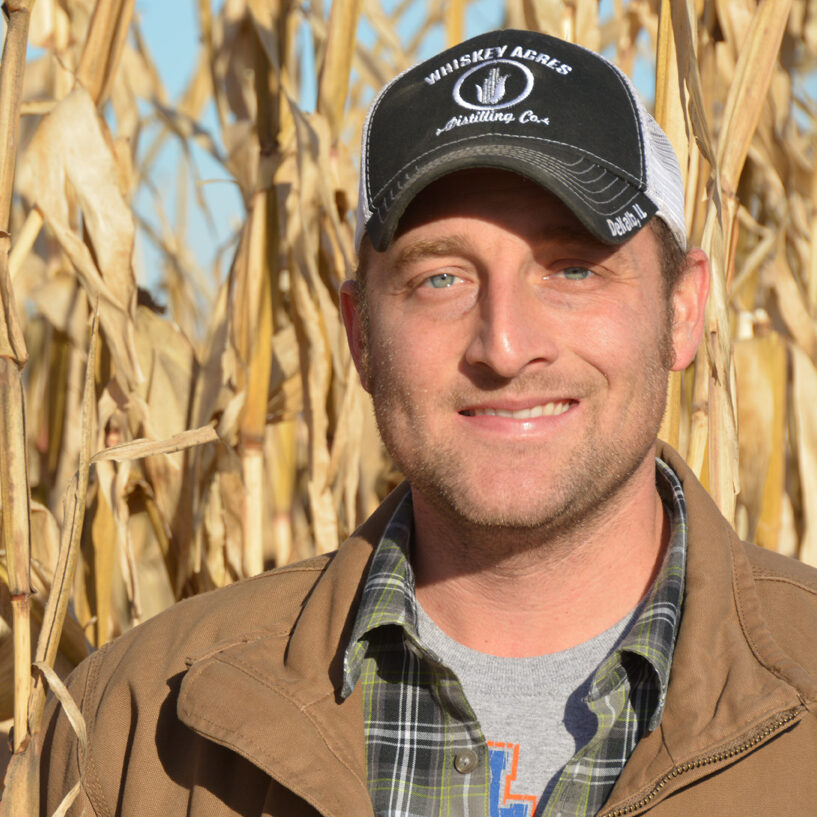
"From Seed to Spirit"
“An hour after our release, we had 800 people lined up down the road, sold out the food truck and thought we were going to drown in guests. After that, I couldn’t wait to do that again.”
Can you give us a bit of background about yourself and how you started in the whiskey industry?
I am a 5th generation farmer and have a degree in agriculture. My partners Jamie Walter & his father Jim are also 5th generation farmers with a farm 60 miles west of Chicago.
We share the passion of creating a high-quality whiskey experience that showcases our roots in agriculture.
Can you tell us about your distillery, and what makes it unique?
Whiskey Acres is Illinois’s first estate distillery and was the second ADI certified estate distillery in the United States. We grow all of our own wheat, corn & rye and soon all our own barley. We have total control of everything that ends up in the bottle.
We may be the only folks who grow rye in Illinois for distilling. We are definitely the only distillery that has an awarded Master Farmer on the team (Jim).
Are there any little ‘distilling’ secrets you can let us in on?
I can tell you that varieties of grains matter. It is a missed opportunity to overlook this.
To oversee the expressions of a specific varietal of grain is extremely important.
Whiskey has been phenomenally successful in the United States and around the planet, why do you think this is compared to other spirits?
Grain for whiskey can be grown more places than fruits such as grapes or apples, which makes whiskey more common globally.
Distilleries across the world have taken those grains and turned them into unique expressions that drive consumers wanting more.
In your years in the industry, what have been the biggest surprises you have faced?
I’ll give you good & bad. The most unpleasant surprise I have seen is the competition for shelf space in the on-premise. The amount of work to do to maintain a placement is more than I imagined.
The good surprise is how much interest there is from people to come and visit us. We have had over 30,000 people come thru our visitor center with people from every continent.
What are the big trends that are affecting the whiskey industry at the moment?
What I think I’m seeing is that whiskey is following the craft brewing industry in that people are following their local brands and trusting them more.
You are also seeing older, more mature spirits that will attract more consumers. The more they try the little guys the more they can trust the quality.
Are there any interesting stories from your time in the whiskey industry that you could share?
On the day we released our first Bourbon expression thru the front door of our tasting room, we had every family member on site to handle the business. An hour after our release, we had 800 people lined up down the road, sold out the food truck and thought we were going to drown in guests. After that, I couldn’t wait to do that again.
What developments in the whiskey industry most excite you?
I’m excited to see what happens to our product as well as other small brands as they grow up and establish ourselves. We have interesting barrel programs and single varietal grain expressions that we are loving watching them mature.
What do you see as being the future of whiskey in the short term?
I think once the government starts to unleash people back into society, people will embrace small distillers for all that they did to try and help during the quarantine in 2020.
Journeyman Distillery: Bill Welter
Journeyman Distillery with Bill Welter

“When the family business was sold in 2006, I decide to pursue my own business, which eventually resulted in Journeyman Distillery in 2010.”
Can you give us a bit of background about yourself and how you started in the whiskey industry?
As you know, I grew up working in the family business of banking, which started with my Grandfather in the early 1970s, so entrepreneurship ran in the family, which prompting me to want to start a business of my own.
In 2012, Johanna and I had a daughter that we named Islay. Our hope is that she will work in the family business when she grows up and started off with a name associated with whisky, plus to show the influence of the time I spent living in Scotland. When the family business was sold in 2006, I decide to pursue my own business, which eventually resulted in Journeyman Distillery in 2010. We started making whiskey at the Koval Distillery in Chicago first while renovating our current location in Three Oaks, Michigan.
I lived in Scotland from 2000-01, and my experience with whiskey before that was more like any other kid with little thought of what actually went into making it. I had just graduated from college where I played for Missouri State a Division 1 golf program, so going to Scotland seemed like a natural progression, so it was off to St. Andrew’s. I call it my PhD in golf! I was waiting tables in St. Andrews, to learn more about the game, when I met a guy by the name of Greg Ramsey, who was the barman and a real whisky aficionado. This is where I received a real appreciation of whisky. It dawned on me that, being in Scotland, I was smack dab in the middle of the home of 150 great whisky distilleries! I was on an island the same size as Indiana, but had so many great distilleries and a people that had such a love for their native spirit
I gained a great understanding for the reverence the Scots had for whisky, which turned my head around from what I had learned from the college drinking culture. After coming home to the U.S., I started working at the family banking business, and would later on work in the Chicago restaurant industry with the idea of opening a restaurant of my own. After deciding that the restaurant business was not for me, I circled back with my old friend Greg, who was now starting a distillery of his own in Tasmania, so I went down there for a while to help him get up & running. I spent 8 weeks learning from distilleries on that island, and then came back to Chicago to a kind of paid internship (in that I paid them to be an intern) at Koval trying to learn how to make whiskey, along with reading as much as I could, plus visiting as many other local distilleries as possible.
I had put all my eggs in one basket. I wanted to be part of the family business, so the distillery’s name has a lot to do with life being a journey, with the ups & downs, life is what you make of it, as well as my own actual travels learning the distilling business. With all of this, and local tradesmen, the name Journeyman really has a number of meanings.
Can you tell us about your distillery, and what makes it unique?
I went to Buffalo Trace, where I saw some of their old bottles from the 1800s, which inspired the look of our bottles today. The future home of Journeyman distillery was discovered driving down the street of Three Oaks one day looking for an old factory building. Though I lived in Indiana the laws did not allow for craft distilling, I was very close to the Michigan state line, and visited Three Oaks and the rest is history. I wanted an old factory building to give the feel of an old whiskey brand.
The building is an old buggy whip & corset factory that was owned by the local Temperance Movement leader EK Warren, which gave it a great back story. With annexing the attached buildings, we have over 40,000 square feet including a restaurant, production facility, bar, and 2 3 event spaces. Behind the distillery, we have a replica of the St. Andrew’s putting green that we call Welter’s Folly (scaled down 3x) in honor of my time spent there and to encourage kids and families to get out and play.
We also have 4 rental properties that we use to host bartenders, members of the trade, and visitors. We do great business hosting weddings, corporate events & retreats, plus seasonal artist markets. In October, we will put on a Barrel Aged Beer Festival Called Islay’s barrel out front of the distillery working with local breweries that use our whiskey barrels to age their beer. The barrel aged beer fest raises money for charity. This gets a great attendance!
Are there any little ‘distilling’ secrets you can let us in on?
If I told you I would have to kill you. Joking. Actually, we are one of the few certified organic & kosher distilleries in the world. We have never sourced a drop of whiskey and are grain to glass, which can’t be understated. We wanted the whiskey to be unique to where we are, so not sourced from Kentucky, Indiana, or Tennessee distilleries. That is what Journeyman is.
Whiskey has been phenomenally successful in the United States and around the planet, why do you think this is compared to other spirits?
It’s just better. It’s more complicated, more depth, more complexity. You love the nuances to it and there is a sense of place. You open up a bottle and enjoy the aroma & taste. You just don’t get that from vodka. Plus, there are better stories behind whiskey brands, like Jack Daniels. I am not a rep for Jack Daniels, but I think everyone should visit that distillery, which is like a historic landmark.
In your years in the industry, what have been the biggest surprises you have faced?
That the whole craft distilling industry took off like it did. That was a surprise. When we opened Journeyman in 2010 there weren’t more than 250 distilleries in the U.S., but now there is somewhere between 2000-3000 distilleries. Just surprised that it took off like it did.
What are the big trends that are affecting the whiskey industry at the moment?
I see that competition has dramatically increased, much like what I see in craft brewing.
You see more distilleries/breweries concerned with just selling out the front door instead of getting distribution more than state-wide, making your place a destination. Less worry of haggling with distributors & accounts.
What developments in the whiskey industry most excite you?
We really love the hospitality side of the industry, and feel that it’s one of our greatest strengths and that we have taking the distillery hospitality model further then many distilleries ever have.
We are going to try to do something similar to what we’ve done in Three Oaks in my hometown of Valparaiso, Indiana with a new brewery/distillery/hospitality restaurant and event spaces there. Having lived in Scotland, we even have a homage to a Scottish single malt, so the American single malt category is something we look forward to.
Our family has a farm in Indiana that we have had since the 1930s where we have grain that we started planting in 2015, so we are planning on releasing a 10-year old Farm Whiskey Single Malt using the grain grown on the farm to release in 2025.
What do you see as being the future of whiskey in the short term?
I think craft distilling will retreat in the sense that it becomes what the Aussies call “a cellar door” experience, meaning making the distillery more of a destination place with less of a focus on distribution. I also think that the major brands will become even more dominate in the short term, and with the declining economy and forced closure of many small distilleries around the united states, consumers will be looking for more economical spirits during this time.
Though I think the brands that do make it thru this pandemic will be stronger for it at the other end. They will have withstood a tremendous downturn, but learn some very important lessons in doing so that will benefit that in the long term.
Are there any interesting stories from your time in the whiskey industry that you could share?
I like to tell the story of visiting George Grant at the Glenfarclas Distillery. I wanted to reward my staff so we went to Scotland with our distilling team. George welcomed our distilling team and the guys at that distillery were just above and beyond friendly and welcoming.
George took us to one of his warehouses to look at casks from the 1950s & 60s. He blew our minds when he took a whisky thief and shared whiskies straight from casks of 60-year old single malt. George Grant and their family distillery is a model or ours in that they have created a multigenerational family owned and operated business of which we hope to replicate. George pointed out that the whisky in the 1950-60’s casks were at one time worth next to nothing, but at other times had significant value which reinforced with me the significant risks associated with the whisky business.
Our time with George was great, and his advice that this business can be very good to you but can have major pitfalls, still rings true to me, especially during these times.
Why do you use the Glencairn Glass in your business and what makes it so special?
Like a lot of things, when you are looking to have the best whiskey experience possible, you want to use the best glass available. Glencairn has been around for 20 years and has not only survived but grown during all those years, so you know it’s great.
We want our visitors drinking from the Glencairn Glass, and it being a family business, we respect that. The Davidson Family is great, and we support family businesses. We feel that it has been a mutually beneficial relationship and Marty Duffy is the BOMB!
To find out more about Journeyman Distillery visit their website here.
Copper Fox Distillery: Rick Wasmund
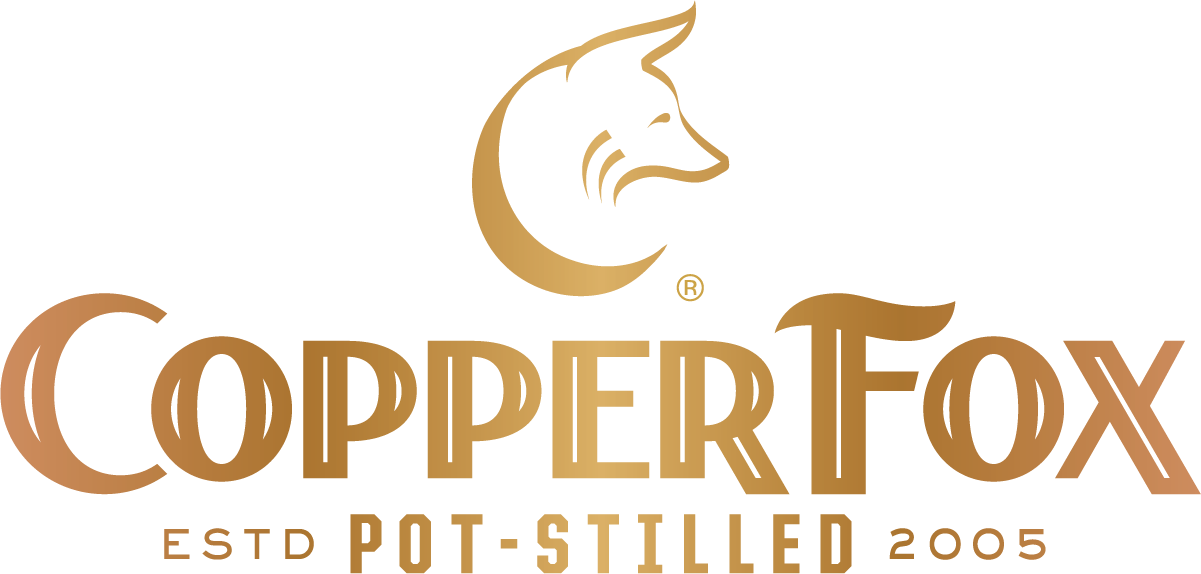
Copperfox Distillery with Rock Wasmund
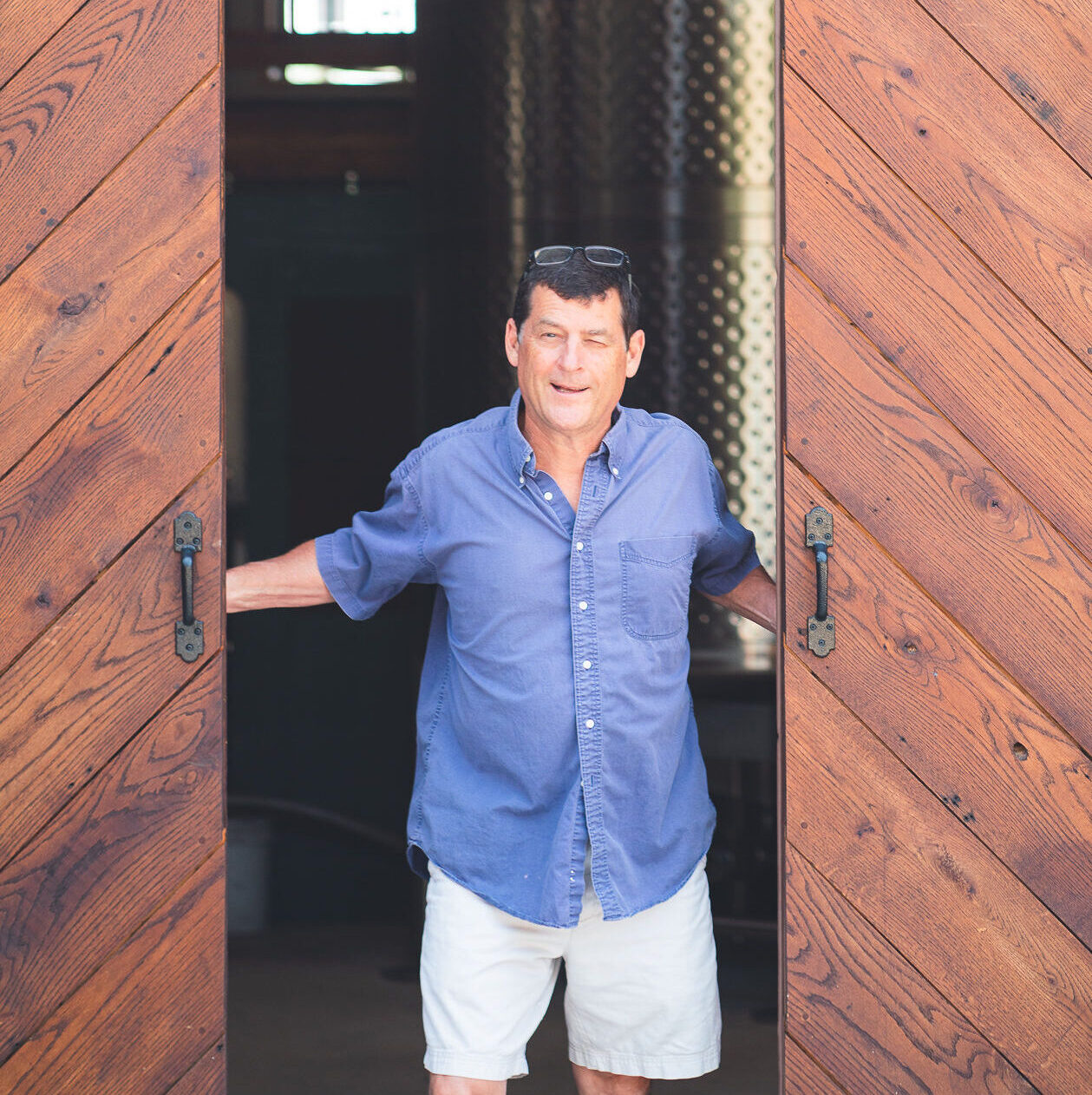
“I was always a fan of whiskey as well as very attuned to the fruit aromas of various wood.”
Can you give us a bit of background about yourself and how you started in the whiskey industry?
Born in Rochester, NY but moved to Virginia after school. After school I worked as a Certified financial planner. I was always a fan of whiskey as well as very attuned to the fruit aromas of various wood. Inspired by a Johnnie Walker tasting in NY where they were waxing on about the alluring smell of peated malt, it got me think that I wanted to check out grain smoked with fruit wood. This was 1999, when I was 40 years old.
I was living in Virgina at the time, where there were a lot of old apple orchards, so naturally I thought an old apple factory would make for an ideal location for my first distillery. We incorporated in 2002, with a number of fits & starts, but finally moved into the Sperryville location in November 2004, then started distilling in 2005.
In 2010, I married, started a family and we all lived above the distillery. In 2015, we started a second distillery at an old motel complex in Williamsburg, VA that has 10 different buildings!
Can you tell us about your distillery, and what makes it unique?
The Sperryville distillery is an old apple factory where we still malt our own barley by hand using fruit wood smoke, plus mature our whiskey using applewood, peachwood & oak wood chips that dangle in the spirits through a hole in the top of the barrels (this may account for an Angels’ Share of up to 20%, but a beautiful whiskey).
Our Williamsburg distillery is an old motel that we converted, and now has a malting floor, a speakeasy, a tasting room, a built-in swimming pool, and an insulated barrelhouse (much like the warmer barrelhouses of India), and a string of old motel rooms that may be used for hospitality spaces in the future. We are within a mile of the famed William & Mary University.
Are there any little ‘distilling’ secrets you can let us in on?
There are no “secrets”. (wink-wink). If I told you they wouldn’t be a secret, now would they? Other than start with great clean grain. We used to work with a local farmer, but he passed away. Now we work with his family to source our grain.
Whiskey has been phenomenally successful in the United States and around the planet, why do you think this is compared to other spirits?
Ummm, because it’s delicious?
In your years in the industry, what have been the biggest surprises you have faced?
The number of people who don’t know by now how whiskey is made or do not understand the difference between Bourbon, Scotch and other styles of whiskey.
What are the big trends that are affecting the whiskey industry at the moment?
Ready-to-drinks seemed hot last year, and should be this year as well.
Are there any interesting stories from your time in the whiskey industry that you could share?
Love to give a shout out to way back in 2000, when I went to Scotland to learn how to malt some barley, and where I ran into the legendary distiller Jim McEwan. Jim encouraged me to follow my mission saying, “You got to do it”. Speaking with him made distilling a calling! I knew then that I just had to embrace my destiny.
What developments in the whiskey industry most excite you?
I like seeing all these little distilleries making it, plus what the big guys are coming up with. It’s just great being part of the larger distilling community.
What do you see as being the future of whiskey in the short term?
The future seems bright enough. It is delicious!
Why do you use the Glencairn Glass in your business and what makes it so special?
Glencairn is the epitome of whisky glasses! We want to be associated with the best, so why not use the best glassware. Of course, it enhances the whole experience and customers appreciate that we use them.
To find out more about Copperfox distillery visit here.
